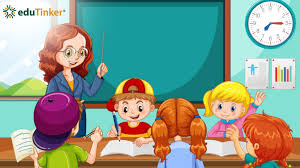The educational landscape continues to evolve as innovative teacher practices incorporate diverse resources to engage today’s young learners. Among these resources, thoughtfully selected kids animated shows have emerged as surprisingly valuable tools for supporting cognitive development, literacy skills, and social-emotional learning. When implemented with clear educational objectives and appropriate scaffolding, these colorful, character-driven narratives can reinforce classroom learning while capturing students’ attention in ways traditional instruction sometimes struggles to achieve.
The strategic partnership between education and animation isn’t about replacing conventional teaching methods but enhancing them through multiple modalities. Research in educational psychology consistently demonstrates that children process and retain information more effectively when it’s presented through diverse channels, including visual narratives. Progressive educators recognize this reality and thoughtfully integrate animated content that aligns with curriculum standards, viewing these resources as supplements to—not substitutes for—direct instruction, hands-on activities, and interpersonal engagement.
Literacy development represents one of the most significant opportunities for educational integration of animated content. Quality programs expose children to rich vocabulary, complex sentence structures, varied narrative patterns, and diverse speaking styles in engaging contexts. Skilled teachers leverage these linguistic features by pausing programs to discuss new words, asking students to predict story developments, or exploring character motivations through guided discussions. These interactions transform passive viewing into active learning experiences that build crucial comprehension skills transferable to reading and writing.
For students developing multilingual capabilities, animated content offers particular advantages. The visual context provides crucial support for language acquisition, helping children connect words with meanings through concrete representations. Teachers working with English language learners often find that carefully selected animated materials provide accessible entry points to curriculum content while supporting vocabulary development and listening comprehension in engaging, low-stress environments.
Mathematical thinking finds natural expression in many quality animated programs through spatial relationships, pattern recognition, problem-solving scenarios, and even explicit numerical concepts. Thoughtful educators extend these experiences through related activities—having students graph data about their favorite characters, explore geometric concepts through animation-inspired art projects, or solve math problems contextualized within familiar animated worlds. These connections help young learners recognize the relevance of mathematical thinking beyond abstract worksheets.
Scientific concepts frequently appear in children’s animation, often presented through engaging storylines that make abstract principles more accessible. Episodes exploring natural phenomena, simple machines, animal adaptations, or basic physics can serve as excellent introductions or reinforcements to curriculum content. Effective teachers use these visual representations as foundations for hands-on experiments, observational activities, and scientific discussions that deepen understanding through multiple modalities.
Beyond academic content, many contemporary animated programs explicitly address social-emotional development through storylines exploring friendship, conflict resolution, emotional regulation, and ethical decision-making. These narratives provide valuable opportunities for classroom discussions, role-playing activities, and reflection exercises that help students develop crucial interpersonal skills in safe, supportive environments. Skilled educators recognize these moments as opportunities to build classroom community and nurture emotional intelligence.
Critical media literacy represents another valuable skill set that teachers can develop through thoughtful engagement with animated content. Even young children can learn to analyze how stories are constructed, identify messages and values within media, distinguish between fantasy and reality, and recognize different perspectives. These analytical abilities transfer to other contexts, helping students become more discerning consumers of all types of information—an increasingly essential capability in today’s complex media environment.
For students with diverse learning needs, animated content often provides accessible entry points to curriculum concepts. Visual learners, children with attention differences, students with language processing challenges, and those with various cognitive styles frequently engage more successfully with concepts presented through multiple modalities. Thoughtful educators use these resources to create more inclusive learning environments where all students can access and demonstrate understanding in varied ways.
Professional development increasingly addresses effective strategies for media integration. Progressive school districts provide resources and training to help teachers select appropriate content, develop effective viewing protocols, and create meaningful follow-up activities. These initiatives recognize that screen-based learning tools require thoughtful implementation to maximize their educational value and minimize potential drawbacks associated with passive screen time.
Parent communication represents another important aspect of successful integration. Effective teachers share their rationale for using specific animated content with families, explaining educational objectives and suggesting ways parents might extend learning at home. This transparency helps build school-family partnerships where screen time conversations focus on content quality and active engagement rather than simply limiting duration.
As education continues to evolve in response to changing technologies and student needs, the thoughtful integration of quality animated content represents an opportunity to create learning environments that are both rigorous and engaging. By approaching animated programming as a valuable educational resource rather than merely entertainment, forward-thinking teachers can harness children’s natural interest in animation to support meaningful learning across multiple domains.

